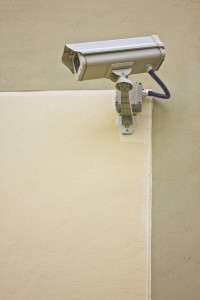 Thermal imaging cameras for are becoming a more frequent choice for many homeowners when they want the ultimate in property and home monitoring equipment. These cameras, which allow those monitoring to see people and objects on their property even when it’s completely dark out, offer even the most vigilant homeowner unparalleled protection. However, before any homeowner decides to invest in these thermal monitoring cameras, they should understand how they work and how their drawbacks may hinder their overall usefulness.
Thermal imaging cameras for are becoming a more frequent choice for many homeowners when they want the ultimate in property and home monitoring equipment. These cameras, which allow those monitoring to see people and objects on their property even when it’s completely dark out, offer even the most vigilant homeowner unparalleled protection. However, before any homeowner decides to invest in these thermal monitoring cameras, they should understand how they work and how their drawbacks may hinder their overall usefulness.
Thermal imaging cameras make rely [sic] on thermal energy/infrared radiation to render an image. The thermal camera is a specialized heat sensor that is capable of detecting very small differences in temperature. As the camera collects thesedifferences, it makes a heat map or an image of the item that is being recorded. This item is easily identified as the outline of an object, a person, or a creature, with most of its details obscured by the colors that are used as representations of levels of heat,” according to a contributing Hub Pages home security and technology writer.
When homeowners track motion with these cameras, they will be able to ascertain living things from objects because of the differences in heat colors, with warmer colors representing heat and cooler shades denoting non-living objects. Because these cameras track both body heat and motion when there is no available light source, it is much easier for a homeowner to know for sure when there is an intruder instead of taking the risk of confronting a thief in the dark.
Before homeowners consider buying these cameras, they should know that they are not infallible. In fact, one major drawback to them is that any kindof bright light pointed directly at the sensor can render them almost useless, as they are designed to work in total darkness. In addition, other nearby light sources, such as street lamps, porch lights, and other forms of artificial lighting, can interfere with the camera’s readings. Homeowners should consider their placement carefully before they decide to buy one. In addition, these cameras can cost anywhere from $4,000 well up into the tens of thousands of dollars, which is out of the price range of the average person.
While thermal monitoring can add a large measure of extra security to any home, its drawbacks may outweigh its advantages for many homeowners, especially for those who are looking to save money on their package.

Kris Murphy
Author – Kris has been learning the ropes, but already has 4 years of industry experience working with us. He is in charge of researching our security system reviews and putting together new content for our site’s blog section.

